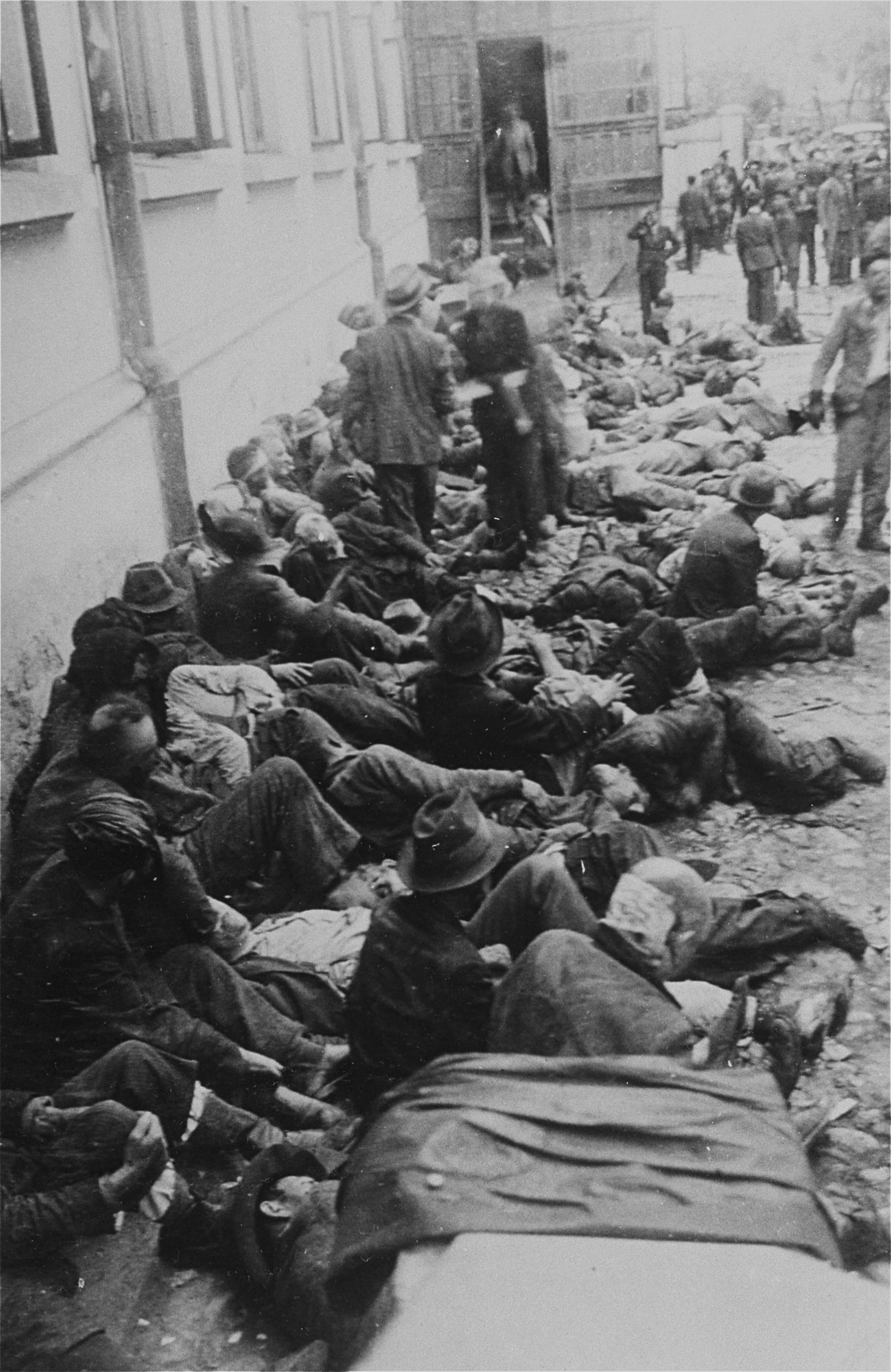
The expulsion of the Jews from Moldova was part of a larger plan, the Romanian equivalent of the Final Solution, which would also encompass the extermination of Jews from Bessarabia and Bucovina. Among other considerations, the plan was based on Ion Antonescu's belief in the German army's ultimate victory.
The evacuation of 45,000 Jews from Iaşi, on June 29,1941, one week after the beginning of the war, was part of the plan to "Cleanse the land" and get rid of the Jews in Bessarabia, Bucovina and Moldova. It included the liquidation of all Jews in the countryside, the confinement in ghettoes of Jews living in the cities, and the detention of all Jews suspected of being Communist Party activists.
The pogrom against the Jews of Iaşi, was part of that plan, and was carried out on 29–30 June, following direct orders from Ion Antonescu that the city be cleansed of all Jews, and that any Jew that allegedly opened fire on Romanian or German soldiers should be eliminated without mercy.
Before these orders were issued, an understanding was reached with the commander of the German army corps (the Wermacht) in Iaşi, about the method to be employed against the Jews. On June 11, 1941, shortly after Antonescu's meeting with Hitler, the SSI established Section Two, a special unit to accomplish the task. Its "official" job was to defend the hinterland of sabotage, espionage and terrorist acts.
The first step was to identify all Jews, communist agents and their sympathizers, by county in Moldova, so that the Ministry of Interior could track them, restrict their freedom of movement and eventually dispose of them when and how Antonescu chose. The second step was to evacuate Jews from all villages in Moldova, and intern some of them in the Târgu Jiu camp in southern Romania. The final step was to provide grounds for these actions by transforming Iaşi's Jews into potential collaborators with the "Soviet enemy" thus justifying retaliatory action against rebels.
On June 26, about a week before the pogrom, young Jews were mobilized to dig huge ditches in the Jewish cemetery. Besides, the police invited the Christian population to mark their houses with crucifixes, in order to differentiate their houses from the houses of the intended Jewish victims. On the same date, anti-Semitic agitation in the local press intensified, and the police was flooded with reports from Romanians claiming that Jews were signaling enemy aircraft, hiding paratrooper agents, and the like. The emergence of this psychosis was arranged by the Section Two and Special Echelon. On the same day, Romanian soldiers began to break into Jewish flats near their camps on the outskirts of the city. Most of those who joined the rioting and looting were civilians who armed themselves or were given weapons, and, some of them being former Legionnaires.
The next stage of preparation of the massacre began on June 27, when authorities accused the Jews of responsibility for Soviet bombings, and false attacks on soldiers were organized to create the impression of a Jewish uprising and the need of strict measures against it. On the same day, Antonescu, who in the case of Iaşi, did not give a written order, issued via phone to Colonel Constantin Lupu, commander of the Iaşi garrison, an order to evacuate Jews from the city. Before these orders were issued, an understanding was reached between Antonescu and the commander of the German army corps in Iaşi about the method to be employed.
On Saturday, 28 June, at 9:00 p.m., a flare was shot from a German aircraft above Iaşi, signaling the beginning of the pogrom. Immediately shots were fired from the streets, from houses, and from rooftops in almost every quarter of the town. On the same night as army, police and gendarmerie units were launching the arrests and executions, Antonescu repeated the order.
These orders gave the police and gendarmerie full authority to torture and murder Jews, and evacuate thousands of them by rail to southern Romania. At the same time, Romanian and German soldiers, police and gendarmerie units went to houses and businesses throughout the city to round up Jews, torturing and killing many of them. Those remaining were brought to several collection sites, but primarily to police headquarters. Authorities claimed that the Jews arrested were communists and were believed to have aided the Soviets, but Jews of all ages were taken into custody.
In the morning of June 29, convoys of Jews from different neighborhoods of Iaşi were directed to the Police Headquarters, where at 3 pm the massacre began during which the Jews were robbed, beaten and killed. The survivors of the massacre were taken to the train station to be evacuated, in accordance with the orders given by Ion Antonescu. The Jews were crammed into freight wagons, used for transporting carbide, whose windows were blocked, thus making the atmosphere inside suffocating. These are the conditions in which two trains, nicknamed "Death Trains", were set in motion. 5,000 Jews were put on the first train that was going to Călăraşi, of which 1,011 survived, while only 700 of the 2,700 Jews who boarded the train bound for Podu Ilioaiei survived. The main causes of deaths were asphyxiation and dehydration.
Jean Ancel, Toldot ha-Shoah: Romanyah, 2 vols., Jerusalem 2002
Jean Ancel, "The Jassy Syndrome" in: Romanian Jewish Studies, 1,1 , 1987, 43-46
Final Report of the International Commission on the Holocaust in Romania Wiesel Report, Bucharest, 2004
Radu Ioanid, The Holocaust in Romania: The Destruction of Jews and Gypsies Under the Antonescu Regime, 1940-1944, Ivan R Dee, Chicago,2000, 80-90
Matatias Carp, Holocaust in Romania: 1940-44, Primor Publishing Company,1994, 159-166
Matatias Carp,Cartea Neagră, vol.2: Pogromul de la Iaşi, Bucureşti: Dacia Traiana, 1948, 64
https://www.inshr-ew.ro/holocaustul-in-romania/